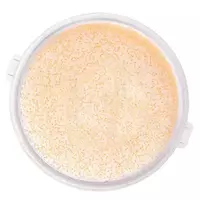Pollock caviar

Pollock or Theragra chalcogramma is a species in the cod family of fish. Pollock is biologically benthic, as well as pelagic and in addition, cold-loving fish, which are most often found in the northern waters of the Pacific Ocean. It is noteworthy that the average pollock specimen does not exceed 91 cm in length. The body weight of pollock fish is about 4 kg. Usually, pollock lives no more than 15 years.
As previously noted, pollock chooses cold northern seas and oceans for habitat. Pollock can be found in the waters of the Japanese, Barents, as well as the Sea of Okhotsk. In addition, the waters of Bering, as well as Monterey Bay, are included in the distribution range of pollock. Currently, pollock is included in the list of important commercial fish, the extraction of which is carried out everywhere in habitats.
Fresh pollock fish are used for culinary purposes. In addition, frozen pollock fillet, fish liver, dried-dried pollock, as well as surimi from finely chopped pollock meat are in demand and popular. However, pollock caviar is especially popular. According to its taste and consumer properties, pollock caviar belongs to the group of pink caviar. Doctors and nutritionists have long paid attention to the unique beneficial and nutritious properties of pollock caviar.
Benefits of pollock caviar
We can say that the benefits of pollock caviar are 100% vitamin-mineral composition of the product. The chemical composition of pollock caviar contains vitamins of group A, B, C, as well as E and PP. In addition, the benefit of pollock caviar lies in the content in the product of such undeniably useful natural compounds as phosphorus, iron, sodium, magnesium, potassium, molybdenum and others.
Pollock caviar is enriched with naturally occurring proteins that are easily absorbed by the human body. The calorie content of pollock caviar is at a fairly low level. As a rule, the calorie content of pollock caviar does not exceed 132 Kcal, which falls on 100 grams of the product. Pollock caviar is also good for the human body, like black or red caviar, researchers claim.
Saline pollock caviar, which can be purchased ready-made in grocery stores, has a special taste value. In addition, you can salt pollock caviar at home. The chemical composition of domestic pollock caviar will be free from the content of various food additives that are necessarily involved in the modern food production process.
Harm of pollock caviar
Pollock eggs are small in size, have a pronounced taste and aroma. In appearance, pollock caviar resembles beige paste. In addition to the benefits, there is information about the presence of harm to pollock caviar. First of all, pollock caviar can harm people suffering from individual intolerance to caviar in particular, as well as all fish products in general. In any case, do not abuse pollock caviar, so that a healthy food does not harm health.
pollock caviar 132 kCal
Energy value of pollock caviar (Ratio of proteins, fats, carbohydrates - ju):
Proteins: 27.9 g (~ 112 kCal)
Fats: 1.8 g (~ 16 kCal)
Carbohydrates: 1.1 g (~ 4 kCal)
Energy ratio (bj | y): 85% | 12% | 3%
 Español
Español Français
Français Português
Português Русский
Русский 简体中文
简体中文 繁體中文
繁體中文 日本語
日本語 한국어
한국어 العربية
العربية Türkçe
Türkçe Қазақ
Қазақ Deutsch
Deutsch Italiano
Italiano Українська
Українська
